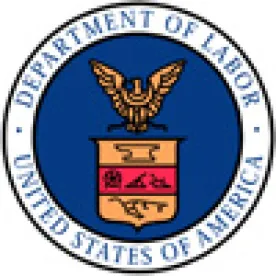Continuing the practice it reinstituted during the current administration, on August 31, 2020 the U.S. Department of Labor’s (DOL) Wage Hour Division (WHD) issued four new Opinion Letters, addressing a variety of topics. That brings the total to 57 Opinion Letters issued since 2018, including the re-publication of 17 Opinion Letters withdrawn during the Obama administration. A brief summary of these most recent Opinion Letters is as follows:
FLSA2020-11: Does the “retail or service establishment” overtime exemption set forth in 29 U.S.C. § 201(i) apply to truck drivers who transport fluid waste from customer oilfield locations to disposal facilities?
In FLSA2020-11, the DOL concluded that the fluid waste transportation service at issue “appears” to qualify as a “retail or service establishment” under Section 207(i) and therefore its drivers, who are paid entirely on a commission basis and whose regular rate of pay meets or exceeds one and a half times the federal minimum wage, would not be eligible for overtime under the FLSA. In addition to clarifying the requirements necessary to satisfy 207(i) (a business “engaged in the making of sales of goods or services,” of which at least 75% of the sales must be recognized as retail in the particular industry, and no more than 25% of the sales are for resale), the DOL reiterates that business that provide services only to commercial businesses, rather than to the general public, may still qualify for the exemption. Moreover, FLSA2020-11 is the first opinion letter issued since the DOL withdrew the two regulations identifying so-called “retail” and “non-retail” establishments in May 2020. Under these now-abandoned regulations, waste removal was listed as a clearly non-retail establishment, whereas in this Opinion Letter the DOL concludes that such a business may qualify as retail (if, notes the DOL, the services provided are similar to those provided to the general public).
A copy of FLSA2020-11 may be found here: FLSA2020-11
FLSA2020-12: What are an employer’s obligations for reimbursing non-exempt drivers for business expenses related to the operation of the drivers’ personal vehicles, and how are those expenses calculated?
In FLSA2020-12, the DOL addresses the obligation of a retail pizza business to reimburse its delivery drivers for the costs, both variable (e.g., gas and tolls) and fixed (e.g., insurance and registration), incurred by the drivers while using their personal vehicles for deliveries. Under the FLSA, employers are required to reimburse non-exempt employees for expenses only when the costs of those expenses would result in the employees earning less than the minimum wage. But how are those costs calculated? FLSA2020-12 clarifies that employers are not required to calculate the actual expenses incurred by employees (although they may) but instead may use a “reasonable approximation” of the costs when the actual amount is unknown, such as when calculating the cost of depreciation for a percentage of a vehicle used for both business and personal reasons. In this respect, while the IRS reimbursement rate or the actual cost are acceptable methods, other reimbursement formulas may be used as long as they reasonably approximate the expenses incurred. Finally, whether an employer must consider fixed expenses – such as registration fees that the driver necessarily would incur even if the vehicle was not used for business purposes – will depend on whether the expense is incurred “primarily for the employer’s benefit.” However, employers need not make that determination on an individualized basis but, rather, may make such a determination applicable to all of the drivers at issue.
A copy of FLSA2020-12 may be found here: FLSA2020-12
FLSA2020-13: Does either the “learned professional” exemption or the “highly compensated” exemption apply to highly educated employees who provide corporate management training?
In FLSA202-13, the DOL addresses whether management trainers, who provide finance training to executive-level employees, qualify for the “learned professional” exemption from the overtime and minimum wage requirement of the FLSA. First, the DOL concludes that the trainers, who are required to possess at least a masters-level degree, likely satisfy the “duties” requirements of the exemption. However, because the employees were paid a daily rate for the work ($1,500 per day), the “salary basis” requirement is not satisfied (despite exceeding the minimum salary level requirement) because the trainers’ pay is not a predetermined amount paid on a weekly, or less often, basis. In so concluding, the DOL concurs with the recent holding of the Fifth Circuit Court of Appeals in Hewitt v. Helix Energy Solutions Group, 956 F.3d 341 (5th Cir. 2020), which held that a pay method that premises an employee’s salary on how many days the employee worked during the pay period cannot satisfy the “salary basis” requirement that the amount of salary be fixed in advance of the pay period. Had both the salary basis and salary level requirements been met, the DOL does note that additional hourly pay would not have affected the employees’ exemption status (that is, an exempt employee may be paid more than the minimum fixed salary). Finally, the DOL concluded that these employees do not satisfy the “highly compensated” exemption (currently, at least $107,432 per year) because they worked only part-time and this exemption does not include a provision for prorating the salaries of part-time employees.
A copy of FLSA202-13 may be found here: FLSA2020-13
FLSA2020-14: May the Fluctuating Workweek (FWW) pay method be used even where employee hours fluctuate only above 40 hours, or must they fluctuate both above and below 40 hours per week?
As an exception to the general rule that employees be paid one-and-a-half times their regular rate for all hours worked in excess of 40 per week, if a non-exempt employee works hours that vary from week to week and receives a pre-established fixed salary intended to compensate all “straight time” (non-overtime) hours the employee works, the employer satisfies the FLSA’s overtime pay requirements if, in addition to the salary amount, it pays at least one-half of the “regular rate” of pay for any hours worked in excess of 40. The salary must remain fixed, it must be sufficient to pay at least minimum wage for all hours worked, and the employer and employee must have a “clear and mutual understanding” that the salary will remain the same regardless of the hours worked each week. Reiterating what it had stated in its recent Final Rule on the FWW pay method, the DOL makes it clear that, notwithstanding the holdings of some district courts, the FWW pay method does not require that an employee’s hours fluctuate both above and below 40 on a regular basis. Rather, the pay method requires only that those hours regularly fluctuate — even if that fluctuation occurs primarily, or even exclusively, above 40 hours per week. The DOL’s position on this issue was clarified in response to a comment submitted by Jackson Lewis to the DOL during the Notice of Proposed Rulemaking comment period. Further discussion may be found here. Now that the DOL has reiterated its position in an Opinion Letter, employers may assert reliance on the Opinion Letter as the basis for a “good faith” defense.
A copy of FLSA2020-14 may be found here: FLSA2020-14




 />i
/>i

